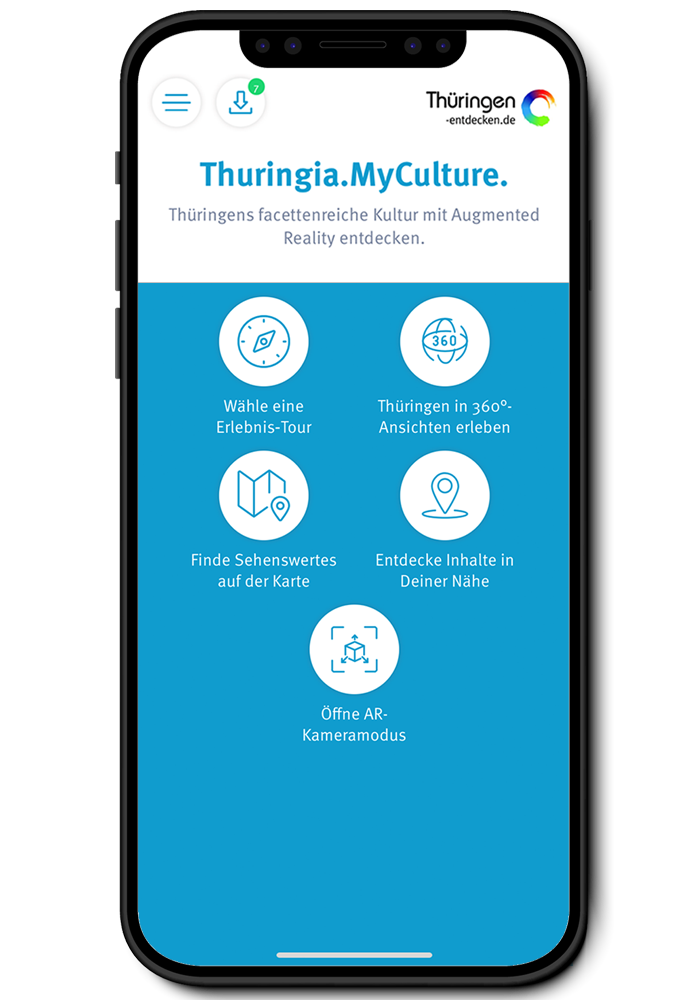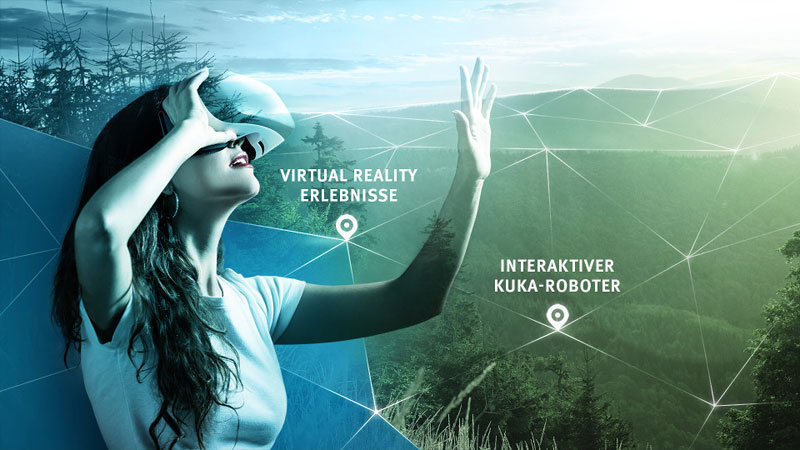Visit the state capital Erfurt and go on a virtual discovery tour through Thuringia.
Father of the porcelain concept
Leuchtenburg Castle
Finally, there is a crashing noise as always happens when porcelain smashes on the ground. At such a moment, however, you are generally in a kitchen or dining room and not standing over an abyss. You also do not normally drop porcelain plates deliberately and then delight in their final sounds. But nothing is normal here anyway. On the contrary: Leuchtenburg Castle attaches great value to doing things differently. Whereas castles throughout Germany have spent decades trying to entertain visitors with gloomy armouries and rooms full of portraits of rules, Leuchtenburg Castle focuses on a more fragile topic: everything revolves around porcelain. This does not really sound exciting at first. However, that changes quite quickly.
Leuchtenburg Castle: high on a hill above the Saale, the castle was built 800 years ago. At that time, it was a powerful official residence and administrative seat, then a prison, a lunatic asylum and a poorhouse. Much later, it was Thuringia’s first youth hostel, then a museum. And sometime around the turn of the millennium, it became a slowly crumbling ruin that no one knew how to save from collapse. Until Sven-Erik Hitzer came up with the idea of porcelain.
The former toymaker, landscape gardener and organiser of a medieval market had previously set up the Leuchtenburg Foundation and had been looking for a theme that would set the castle apart from others. At around the end of the 19th century, the manufacture of porcelain was Thuringia’s most important industry. Kahla, at the foot of the fortress, was particularly well known for its crockery. Hitzer’s idea to combine the fine and fragile material thematically with the impressive fortress initially sounded far-fetched to many people. Now the castle captivates 85,000 visitors a year.
This is, of course, primarily because of the way in which Leuchtenburg Castle addresses the theme. Nothing here is how you would expect. Endless display cabinets containing a constantly changing array of plates, bowls and cups? Not here. There are also no precocious educational films or dictionary-like explanations. Instead, you will find yourself standing in front of a display case of crabs that have a porcelain handle in place of a tail – when people did not yet know how the Chinese came by the wonderful material, they considered it to be completely possible that animals produced porcelain there in the Far East. The unicorn also came under suspicion for a while: its horn, people suspected, had to be ground at full moon in order to produce fine ceramics.
It was only in around 1700 that people in Europe figured out that porcelain is produced from the correct mixture of kaolin, feldspar and quartz, fired at 1,100°C. Until then, princes and kings employed alchemists to track down the secret of the white gold. When you visit Leuchtenburg Castle, you can use large weighing scales to try to get the correct ratio of ingredients yourself. And fire your first pieces, even if only virtually. If you are unsuccessful, you will be consoled by three-legged horse sculptures and vases without handles in the “Room of Failure”. After rooms containing the world’s smallest vase and an eight-metre high porcelain sculpture, you will suddenly find yourself standing in front of the Bridge of Wishes: here you can write your heart’s desire on a porcelain plate in secret ink and then drop it into the abyss at the end of a glass skywalk. Until it shatters noisily.
Header picture: ©Nicky Hellfritzsch, Stiftung Leuchtenburg
Accessibility
Did you like this story?
You might also be interested in ...













